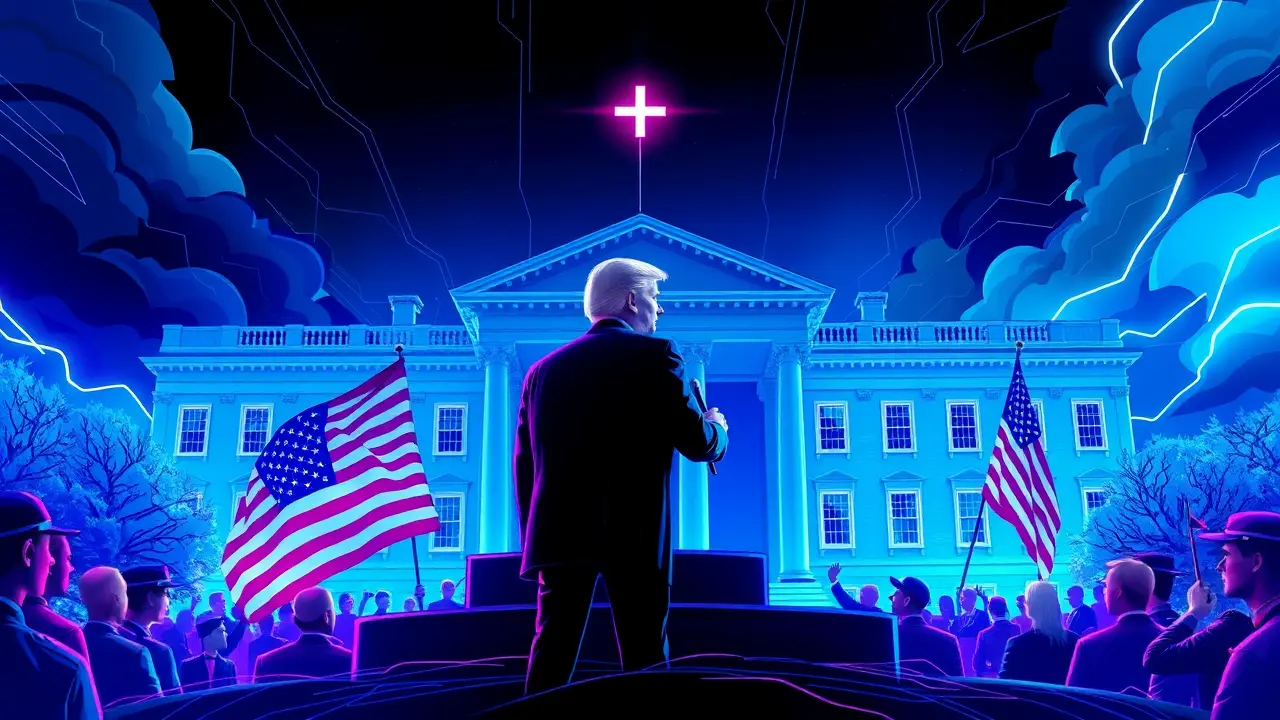
Politicsgovernments & cabinetsLeadership Transitions
Trump's Most Disruptive Presidential Actions Analyzed
MA
Mark Johnson
1 day ago7 min read
In the high-stakes arena of American politics, every presidency accumulates a record, but Donald Trump’s tenure operated less like a traditional administration and more like a perpetual, high-octane campaign aimed squarely at the foundations of Washington's established order. His most disruptive actions weren't merely policy shifts; they were strategic volleys in a political war designed to break the system as we know it.Consider the judicial revolution: the appointment of three Supreme Court justices and a historic number of conservative federal judges wasn't just a checklist achievement; it was a long-game political maneuver that recalibrated the nation's legal compass for a generation, creating a judiciary far more receptive to challenges against regulatory agencies and precedent itself. Then there was the foreign policy shock therapy—withdrawing from the Trans-Pacific Partnership, the Paris Climate Accord, and the Iran nuclear deal.These weren't isolated exits; they were a coherent doctrine of diplomatic disruption, signaling a wholesale rejection of multilateralism in favor of a transactional, 'America First' nationalism that left allies reeling and recalibrated global power dynamics overnight. Domestically, the weaponization of executive power reached a fever pitch.The declaration of a national emergency to divert military funds for a border wall was a masterclass in executive overreach, a bold test of constitutional boundaries that underscored a governing philosophy centered on personal prerogative over congressional approval. His relentless, unfiltered communication via Twitter became his most potent disruptive tool, a direct channel to his base that bypassed the media gatekeepers, set the daily news cycle ablaze with controversies, and effectively rendered the traditional White House press apparatus secondary.This wasn't just rhetoric; it was a fundamental rewiring of presidential communication, normalizing a style of governance conducted in real-time, 280 characters at a time. The first impeachment, stemming from his dealings with Ukraine, was less a constitutional crisis contained and more a battle in his ongoing war with Congress, a conflict that further eroded institutional norms and deepened partisan trenches.And we cannot overlook the 'deep state' narrative, a sustained assault on the credibility and independence of the intelligence community, the FBI, and the civil service—a deliberate strategy to undermine public trust in any institution perceived as an obstacle. Analyzing these moves through the lens of political strategy reveals a consistent pattern: disruption was not a byproduct but the central objective.Each action, from tax cuts that exploded the deficit to trade wars that upended global supply chains, was calculated to challenge the status quo, energize a base, and force opponents into reactive, often chaotic, positions. The legacy is a political landscape where the guardrails feel weaker, the norms are bent, and the very playbook for presidential conduct has been torn up, setting a precedent that future administrations, of any party, will now have to contend with.
#featured
#Donald Trump
#US presidency
#political disruption
#executive actions
#East Wing
#Congress
#editorial picks news
Stay Informed. Act Smarter.
Get weekly highlights, major headlines, and expert insights — then put your knowledge to work in our live prediction markets.
Comments
It’s quiet here...Start the conversation by leaving the first comment.
© 2025 Outpoll Service LTD. All rights reserved.